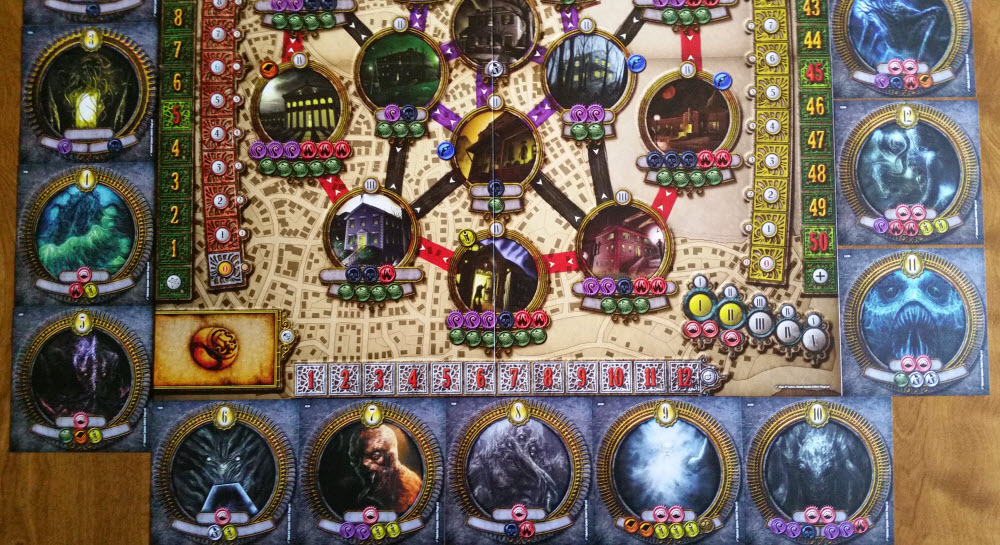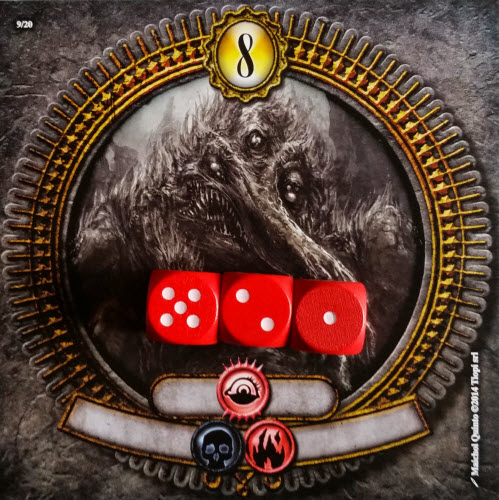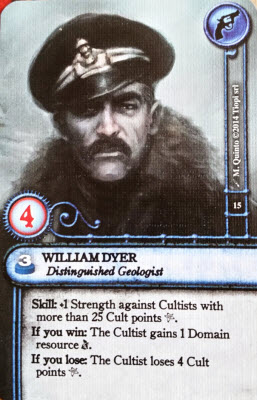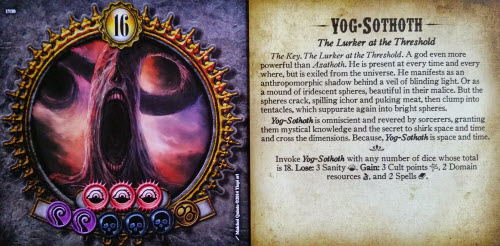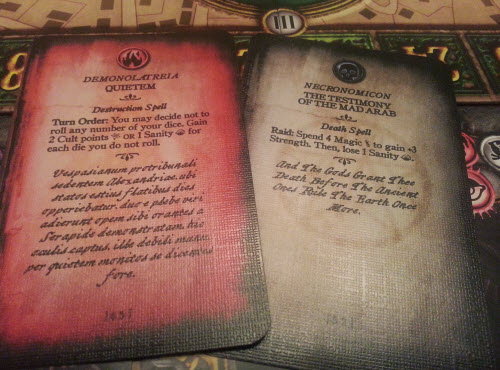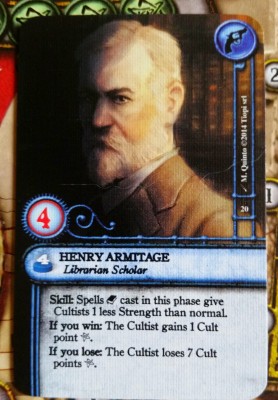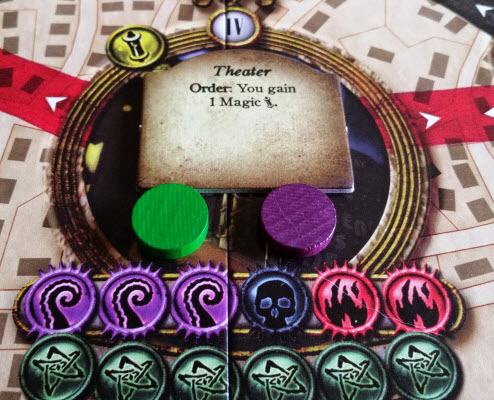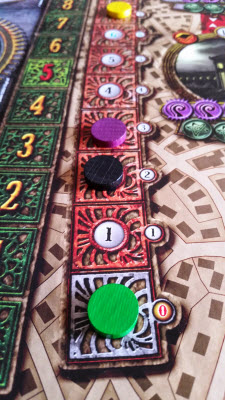For once in his life, Daniel Lafferty was sure his uneasiness at the party was not the result of his introverted nature. Dan had only been a resident of Kingsport for a couple months now and was a little surprised at himself for even going to the Evans house at all. He had been wanting to make new friends for some time, and while working at the general store helped him acclimate, it hadn’t led to many inroads. That is, until today, when he met Gary Jones. Gary’s enthusiasm was infectious, and Dan recalled being overwhelmed with a desire to accept the man’s offer to this party. Which he did.
Now that he was here, though, everything felt…off. The house. The attendees. That strange humming seemingly coming from everywhere and nowhere at the same time…
Yes, something was very odd at this party, and until he could quietly slip out, all he knew was that every instinct told him not to drink the punch.
The Premise
Ia! Ia! Cthulhu Fhtagn! The town of Kingsport has become a haven of cultists worshiping horrific beings beyond the stars. As high priests of one of these cults, players must ensure that their unholy festival comes to pass in this sleepy town. They must invoke the blessings of various Great Old Ones, stave off pesky Arkham investigators, and maintain what little sanity they have in order to exert the most influence over one another. Everyone may be a cultist here, but only one group can be truly worthy.
The Rules
Kingsport Festival is a light dice allocation game about Lovecraftian cultists. The game requires the placement of 20 Great Old One cards around a central board, with room for Spell cards and the game’s three main resources: Evil, Death, and Destruction. Spells are special one-time cards that aid players during different phases of the game.
To begin, a Scenario card is randomly chosen. Scenarios slightly alter each game, and most include choosing a random Festival card to be revealed at the end of the game. Additionally, four Investigator and Event cards are randomly chosen for the cultists must face; each Scenario stipulates in which rounds that will happen.
Played out over 12 rounds, each is broken into five phases: Turn Order, Invocation, Concession, Expansion, and Raid. All players begin with ten Sanity and three dice.
The aptly-named Turn Order phase establishes turn order for the round. Players roll their dice, and turn order is set starting with the player whose dice have the lowest sum. Then the first and second players gain Sanity.
Next comes Invocation. In turn order, players either place one or more of their dice on a Great Old One card matching the sum of those dice, or pass. Dice may be split between multiple cards, but with one exception, only one player may invoke each Great Old One card per round. This continues until everyone passes.
In Concession, the Old Ones bestow their gifts upon the worthy. In numerical order, each Great Old One card is resolved. The player retrieves their dice, pays any required costs, and then receives the rewards of that card (resources, Spells, Magic Points, etc.). Most concessions also require losing sanity, however. If a player does not have enough, they lose VP instead.
Then players move to Expansion, wherein they exert their dark influence on the town. In return, these locations reward players with additional powers, abilities, and VP. In turn order, players may spend resources to spread their evil onto one new location on the board. Players must begin with the centralized House location, but thereafter players can select any location adjacent to one they already have influence in.
Lastly, if it is one of the four rounds specified in the Scenario, a Raid occurs. First, that Raid’s Event card is resolved. Then, each cultist must individually face the Investigator. Each Investigator comes with a Strength value and some unique ability. To defeat them, the player’s own Strength value must meet or exceed the Investigator. Otherwise they suffer the consequences.
Once complete, the next round begins. Players continue until the end of the 12th round. At that point, the Festival card (if any) is resolved, and players tally up their VP. The player with the highest points is the winner. Their cult, already low on sanity to begin with, will round up their competition and sacrifice them upon stone altars from R’lyeh.
Everyone else should probably have seen that coming.
Portrait Of A God
Kingsport Festival aims to present a dark but cogent locale for the game, but it’s hard not to notice some of the thematic conundrums that exist. For example, even polytheistic worshipers tend to focus on a single deity at a time, be it Zeus, Thor, or Cthulhu. Why then would your cultists be throwing out prayers to anyone willing to listen? Wouldn’t it be more likely that each cult be trying to curry favor with one specific god instead of 20?
Moreover, it seems unnecessary that players don’t automatically start with influence at the House location since it’s essentially a requirement everyone do this on their first turn. It would therefore make more sense that each player begin at the House, and either let players expand elsewhere immediately, or simply prohibit expansion during the first round.
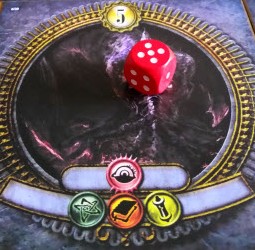
Room for another die. Or twenty.
The most visual example of theme at work, though, is with the thin but oversized action cards. These nearly 5 x 5 inch cards take up almost as much table equity as the board and are far larger than necessary just to house three dice. The game could easily have used a singular sheet or board containing all of the gods’ actions instead and utilized far less real estate. As it is, the cards feel largely extraneous.
However, these cards do possess a certain thematic appeal when surrounding the board. Each action card has a unique (albeit dark) quasi-Impressionist depiction of the god, as well as vivid iconography of what that god offers you in return for your devotion. The reverse of each card also contains decent flavor on that particular entity.
Well, flavor…and their name. The front side only states the god’s numerical value. In yet another thematic quandary, it feels rather strange that to find out that Number 17 is Shub-Niggurath, you actually have to flip the card over.
Kingsport’s rulebook also contains a plethora of pleasant supplemental material on all things Lovecraft. However, this information is added to the page margins rather than as a separate section, cluttering up an otherwise straightforward rules layout. Ironically, though, even within all its text, there are a few rules omissions that have to be inferred, such as the timing of some Spells and explicitly stating that you can choose any type of Spell when gaining them.
Evidently, Kingsport Festival can’t portray being a maniac without including some mania. On the one hand, it does a fair job at presenting many Lovecraftian aspects, and it’ll catch the attention of Cthulhu fans and Immersionists alike. The game wants players to embrace the fun side of being a cultist, whether that’s casting arcane spells or battling pesky Arkham Investigators.
On the other hand, the thematic impact to gameplay itself is rather surface level, and this can affect long term appeal. Even the amusement of whispering “Evil!” when handing out Evil resources wears off in the latter stages of the game.
Of course, some people might not want to whisper or chant anything…but where’s the fun in that?
A Not-So-Fevered Pace
Theme aside, the one notable misfire in Kingsport Festival is actually with its pacing. While the game is remarkably easy to grasp and the basic nature of dice placement is enticing, Kingsport can start feeling a little drawn out and repetitive towards the end.
This is especially evident in sessions where you defeat the fourth Investigator prior to the final round – which happens 64% of the time. Defeating the hardest do-gooder feels like it should be the final showdown. Thus, subsequent rounds can feel lackluster as players make one last mad dash for points.
The pacing issue is also noticeable in that the flow of the game is pretty static. That is, with the exception of fighting Investigators, the actions available to you on Round 1 are almost the same as those on Round 12. On the plus side, this makes Kingsport Festival very accessible to a wide range of casual and family gamers, and it doesn’t let itself get bogged down with complexity creep. Unfortunately, that static play style can also make you occasionally feel like you’re just going through the motions to reach the end after a certain point.
Kingsport Festival is a worthwhile Gateway Plus Game, but it comes across as one that lasts just a couple rounds longer than it ideally should. Case in point: Kingsport can be appealing for Socializers due to its ease of play, but the 90 minute play time will likely be too long for them for a game with only mild interaction.
The Thug[ee] Life
Most Resource Management and Worker Placement games increase in strategic actions, tactics, and complexity as they ramp to a climactic finale. Kingsport Festival instead has more of flat progression than one of upward momentum, having you adapt to making the best choices with the limited resources and buildings available to you. While this prevents issues with learning curves or player experience advantages, it also limits your strategic options; there no few actions or abilities to unlock that can be incorporated into your strategy as the game evolves.
In that sense, Kingsport Festival is more of a dice game with a board than a board game using dice. The vast majority of what you’re able to do each round is determined by a single dice roll, and effects that allow for rerolls or manipulating die results are rare. Plus, since you’re limited to only three dice all game, you can’t add dice to increase your odds either. With these limitations, and the lack of any real endgame payoff, Tacticians are wise not to get involved with such cultists.
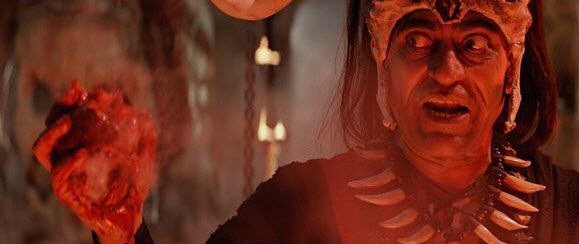
Can I interest you in the Cult of Kali Ma?
Strikers won’t find much enjoyment here either as Kingsport Festival has a lot of unmitigated luck. A poor series of rolls can be costly to your chances of success, and with no way of swapping resources to offset it, it’s easy to fall behind. What’s more, while they’d enjoy being able to block others from taking action spaces, there’s little means to directly thwart another cultist. For some strange reason, you can’t cast Death Spells on your opponents…
To that end, Architects are unsurprisingly mixed on the game. These folks will enjoy that you can expand across the board relatively unimpeded, especially given that buildings do not have a player influence limit. With no additional dice and the inability to actually hoard resources, there’s no room for their preferred long term strategies. However, if that is known going in they may enjoy this jaunt into the Arkham neighborhood.
What is surprising is that Daredevils are also decidedly mixed on Kingsport Festival. Luck is very much the consummate sixth player in this game, and for folks who don’t mind a bit of chaos that’s normally not an issue. Nevertheless, with a maximum usage of three different spaces every turn and a very direct method of building expansion, Kingsport indirectly limits your ability to truly embrace and take advantage of its randomness. Daredevils will certainly give it a try, but whether they feel it’s too long or too constraining in the long term may vary from person to person.
The Takeaway
For a dark game (both visually and thematically), Kingsport Festival is a rather light affair. It is effectively a more luck-based Kingsburg with a Cthulhu theme stapled on to it, and it has players doing the best they can with limited resources to evoke whichever Great Old Ones will listen. Kingsport can be jumbled at times with that flavor, though, and it can also get a little long in the tooth with its chaotic-but-structured nature after a full twelve rounds. Yet a decent dice game it remains. Kingsport Festival maintains its replayability not from its mechanics but because of its straightforward nature and the variability of the Scenarios and Investigators being faced. It implores players to embrace their inner evil and channel that into a simplistic game of Lovecraftian horror. And there’s nothing scary about that.
Kingsport Festival is a product of Passport Game Studios.
Cardboard Republic Snapshot Scoring (Based on scale of 5):
Artwork: 3.5
Rules Clarity: 3.5
Replay Value: 3
Physical Quality: 3.5
Overall Score: 3
Photo Credits: Temple of Doom cultist by Paramount Pictures.

